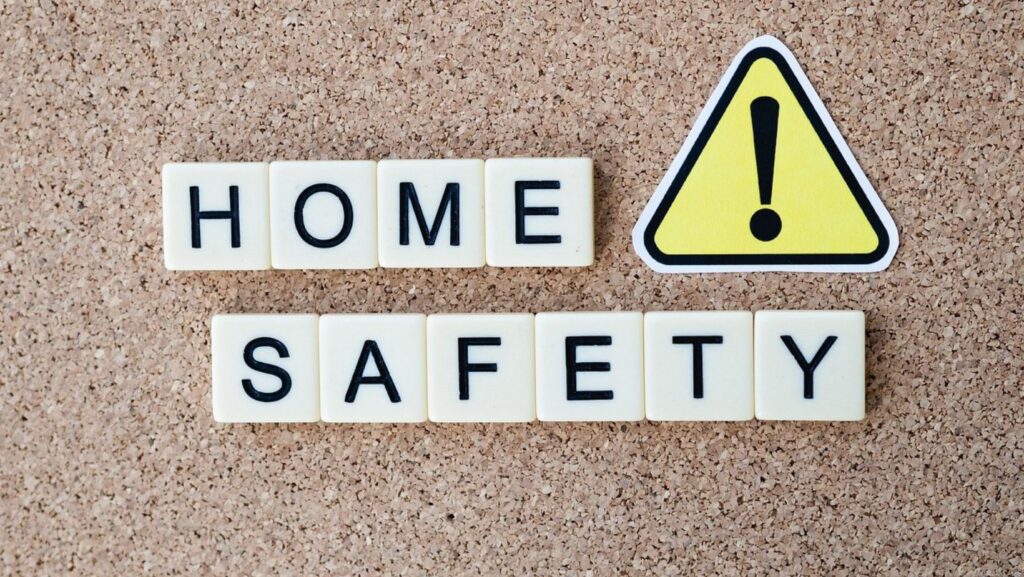Home safety is a top priority for any homeowner, but with so many potential hazards, it can be hard to know where to start. Creating a safe environment doesn’t have to be complicated. By taking a few simple steps, you can reduce common risks and enhance the security of your home. Here are six practical ways to make your home safer, protect your family, and give you peace of mind.
Reduce Fire Risks with Regular Maintenance
Fire hazards are among the most common dangers in homes, and regular maintenance can significantly reduce these risks. For instance, dryers can become serious fire hazards when lint builds up in the vents. Over time, this buildup can restrict airflow, causing overheating and potentially sparking a fire. Scheduling professional dryer vent cleaning is essential for removing this lint and ensuring your dryer operates safely. Proper cleaning keeps vents clear, reducing the risk of fire and improving your dryer’s efficiency.
It’s also crucial to check other areas that could be potential fire hazards. Regularly inspect and clean fireplaces, chimneys, and heating appliances to prevent dangerous buildup. Additionally, ensure all smoke detectors are functioning correctly, testing them monthly and replacing batteries at least once a year.
Secure Entry Points to Deter Intruders
The security of your home’s entry points—doors and windows—is essential for keeping intruders out. Begin by reinforcing exterior doors with deadbolts, and consider installing smart locks that allow you to monitor and control access remotely. Windows are also vulnerable points, so installing locks on all ground-level windows or investing in security film can make it more challenging for intruders to gain access.
Outdoor lighting is another effective deterrent. Motion-activated lights illuminate your property when movement is detected, making it harder for potential intruders to approach unnoticed. You may also want to invest in a security system with cameras that monitor your home’s entry points. Many modern systems provide smartphone access, allowing you to keep an eye on your property from anywhere, adding another layer of security to your home.
Improve Indoor Air Quality for Healthier Living
Indoor air quality often goes overlooked, but it plays a significant role in home safety, particularly for those with respiratory conditions or allergies. Dust, pet dander, and chemicals from cleaning products can accumulate and affect the air you breathe. Start by replacing or cleaning HVAC filters regularly to improve airflow and reduce allergens.
Adding indoor plants, using natural cleaning products, and ventilating rooms can further enhance air quality. For more severe cases, consider investing in an air purifier that filters out particles, dust, and allergens. Regular air quality improvement measures not only make your home a healthier place but also prevent potential health issues associated with prolonged exposure to indoor pollutants.
Prevent Slips and Falls with Simple Adjustments
Falls are a leading cause of injuries in homes, especially for older adults and children. Making small adjustments can significantly reduce the risk of slips and falls. Start by installing grab bars in bathrooms, particularly near the shower and toilet, where surfaces can be slippery. Non-slip mats in the shower and by the sink also provide added traction, reducing the chance of slipping.
Ensure that high-traffic areas, such as hallways and staircases, are well-lit, as poor lighting can make it difficult to spot potential hazards. Adding handrails on both sides of staircases can also provide additional support. If you have young children, consider securing rugs and using corner guards on furniture edges. These minor adjustments make your home safer for everyone, minimizing the chance of falls and injuries.
Regularly Inspect and Maintain Appliances
Appliances are essential for everyday convenience, but faulty or poorly maintained appliances can pose serious risks. Begin by inspecting your appliances for frayed wires, loose connections, or any other visible damage. Damaged cords can cause electrical shocks or fires, so it’s important to replace them immediately.
Regularly maintain appliances like stoves, microwaves, and washing machines by cleaning them and checking for any unusual sounds, odors, or performance issues. For larger appliances like HVAC systems or water heaters, schedule periodic professional inspections to ensure they’re functioning correctly. Proper maintenance not only extends the lifespan of your appliances but also keeps your home safer by preventing electrical or mechanical malfunctions.
Test Carbon Monoxide and Smoke Detectors
Carbon monoxide (CO) is a colorless, odorless gas that can be lethal in high concentrations. Installing CO detectors in addition to smoke detectors is crucial for identifying this invisible threat. Place CO detectors near bedrooms and fuel-burning appliances, such as furnaces, fireplaces, and stoves, to ensure early detection of any gas leaks.
Regularly test your CO and smoke detectors by pressing the test button to confirm they are working correctly. Replace the batteries annually, and consider upgrading to devices with a digital display to monitor CO levels. Many modern detectors offer dual-functionality, detecting both smoke and CO, which makes them a convenient and effective choice for home safety. Keeping these detectors in working order can save lives, as they provide an early warning in case of fire or CO buildup.
By following these six simple steps, you can create a safer, healthier home environment for your family. From regular maintenance and security improvements to air quality control, taking these precautions will help you prevent accidents, deter intruders, and enhance overall well-being in your living space.




More Stories
How To Protect Your Home Entertainment Appliances From Cyber Attacks
The Lighthouse Man: Bringing Coastal Charm to Your Home
How to Repair Your AC Unit: Crucial Tips to Follow